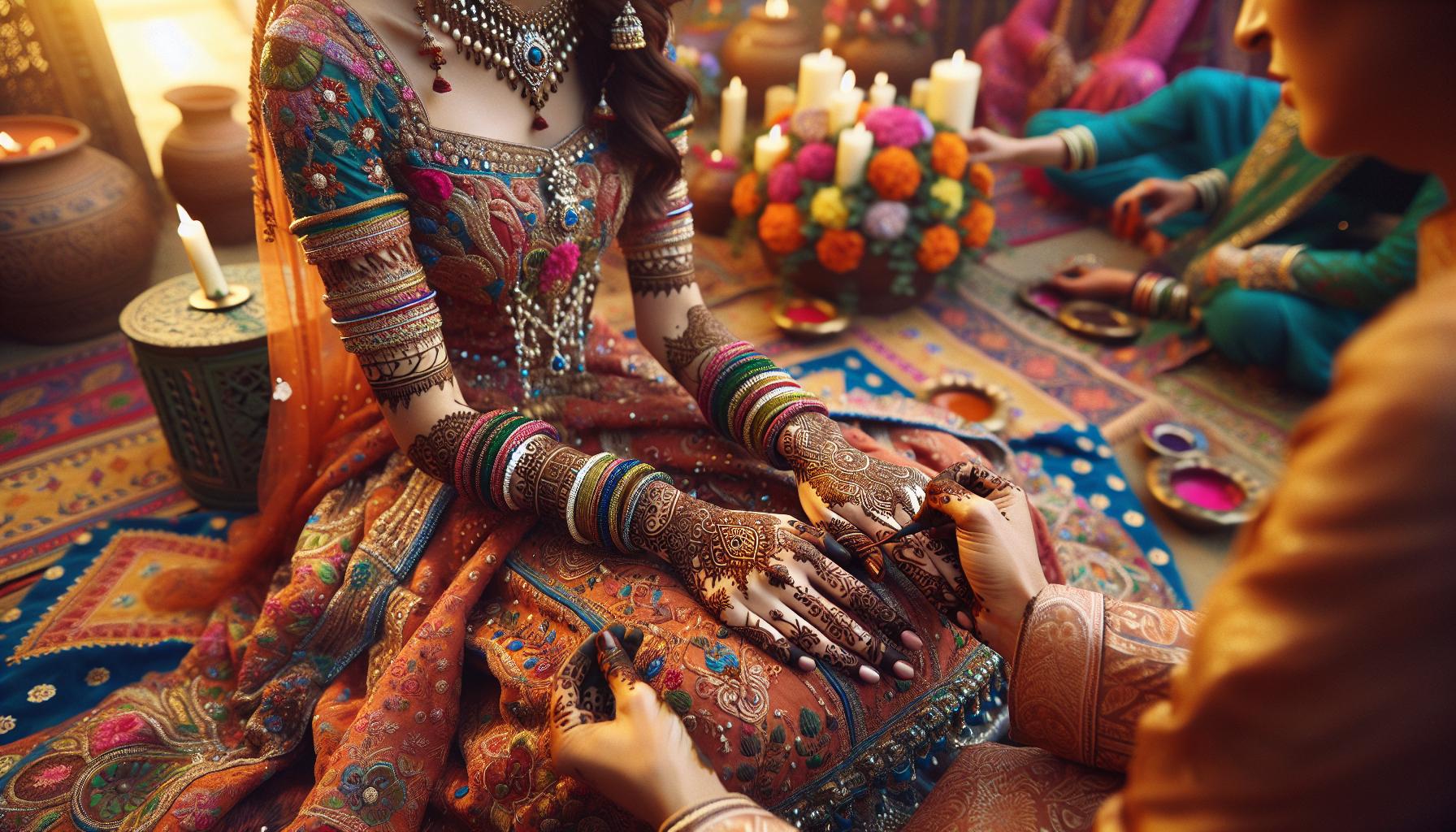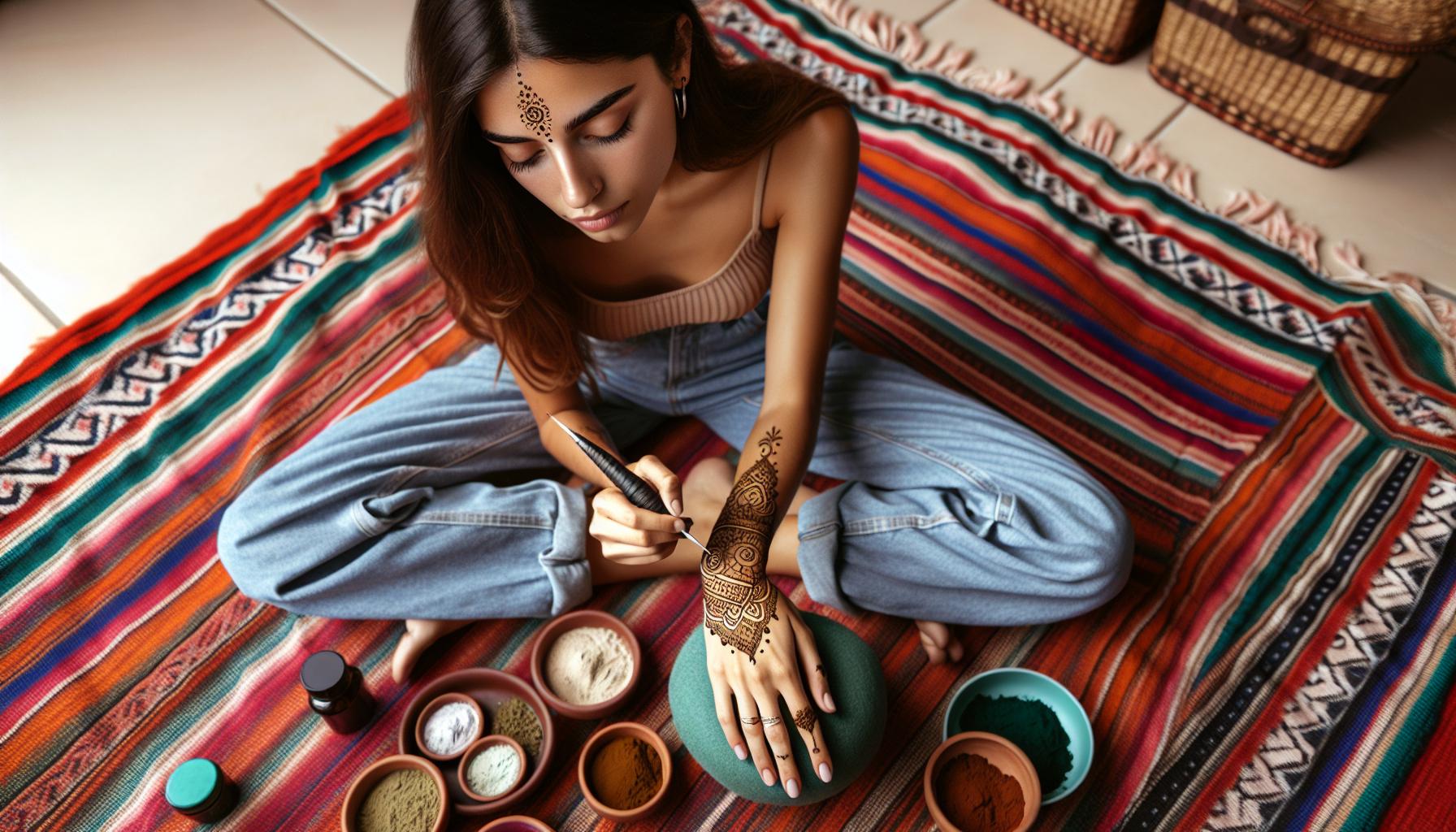Mehndi has always held a special place in my heart, weaving beauty and tradition into every intricate design. From weddings to festivals, this ancient art form transforms hands and feet into stunning canvases. With its rich history and cultural significance, mehndi isn’t just about aesthetics; it’s a celebration of life and love.
Key Takeaways
- Cultural Significance: Mehndi goes beyond aesthetics; it represents traditions, celebrations, and expressions of love in various cultures, particularly during weddings and festivals.
- Variety of Designs: Designs range from intricate and bold regional styles to simple patterns, allowing for personal expression and catering to diverse preferences.
- Application Techniques: The method of applying mehndi is crucial; using a henna cone provides precision, while techniques like stenciling and freehand drawing offer creative freedom.
- Aftercare Matters: Proper care after application, such as avoiding water for 24 hours and using a sugar-lemon sealant, is essential for achieving the best color and longevity.
- Modern Trends: Contemporary mehndi incorporates modern designs, blending traditional elements with minimalistic and geometric styles, appealing to a younger audience.
- Choosing Quality Ingredients: The quality of henna and additives like essential oils significantly affect the vibrancy and longevity of the designs, making ingredient selection important.
Beautiful Mehndi:zmtdecvhn0m= Simple Mehndi Design
Beautiful Mehndi:zmtdecvhn0m= Simple Mehndi Design art serves as a cultural expression steeped in tradition. This intricate application involves natural henna, creating stunning temporary patterns on the skin. Various celebrations, including weddings and festivals, showcase these designs, captivating onlookers and adding an element of elegance.
Mehndi designs often vary based on regional styles. Middle Eastern designs emphasize bold, dark patterns, while Indian styles showcase fine, intricate details. Each design carries meaning, symbolizing joy, love, and unity. Simple mehndi designs, often featuring floral motifs or geometrical shapes, appeal to those who prefer a minimalist aesthetic.
The process of applying mehndi involves several steps. First, creating a cone from plastic or paper allows precise control. Second, the henna paste must remain on the skin for several hours, enabling vivid coloration. Lastly, the design should be cared for properly to ensure longevity, avoiding water contact for the first 24 hours.
Exploring beautiful mehndi reveals a rich tapestry of artistry and tradition, enhancing festivities and personal expression. From simple patterns to elaborate creations, mehndi remains a cherished practice.
Significance of Mehndi in Culture

Mehndi holds deep cultural significance, serving as more than an art form. It embodies traditions, celebrations, and expressions of love across various societies.
Traditional Uses
I observe that traditional uses of mehndi often coincide with significant life events. During weddings, brides adorn their hands and feet with intricate designs, symbolizing purity, joy, and good fortune. Festivals like Eid and Diwali see the application of mehndi as a ritual to invite blessings and enhance the celebratory spirit. Customary patterns often vary by region, reflecting local heritage and societal values. In some cultures, mehndi signifies fertility and prosperity, enhancing its importance in various ceremonies.
Modern Adaptations
I note that modern adaptations of mehndi incorporate contemporary styles and techniques. While traditional designs remain popular, many now blend elements of modern art, featuring geometric patterns, minimalistic lines, and vibrant colors. Temporary tattoos and henna design workshops have emerged, catering to diverse audiences. Mobile mehndi artists offer customized designs for events beyond weddings, appealing to younger generations seeking personal expression in casual settings. Social media platforms further propel the visibility of mehndi, showcasing innovative trends and inspiring fresh interpretations of this age-old practice.
Simple Mehndi Designs

Beautiful Mehndi:zmtdecvhn0m= Simple Mehndi Design showcase elegance with minimal intricacy. These designs often focus on clean lines and well-structured patterns, making them ideal for those seeking a subtle yet beautiful aesthetic.
Top Beautiful Simple Designs
- Floral Patterns: Floral motifs symbolize beauty and freshness. Small roses or lotus shapes can enhance the charm of hands or feet.
- Geometric Shapes: Triangles and squares create eye-catching patterns. They add modern flair while maintaining simplicity.
- Thin Lines and Dots: Delicate lines combined with dots create graceful designs. This style emphasizes precision and neatness.
- Single Motif Designs: A single large motif, such as a peacock or mandala, captures attention effortlessly. This minimalist approach highlights the beauty of the design.
- Negative Space Effects: Utilizing skin as part of the design adds uniqueness. These patterns often feature swirls or curves that let the natural skin tone shine through.
- Cone Application: A henna cone allows for controlled application. This method helps create fine lines and intricate details.
- Stenciling: Using stencils simplifies the process. They provide a guide for precise patterns, ensuring consistent designs.
- Freehand Drawing: Freehand techniques enable creativity. This method allows for personal expression and unique designs.
- Layering: Applying multiple layers of henna darkens the design. This enhances longevity, providing a bolder appearance.
- Aftercare: Proper care increases design retention. Keeping the henna moist and avoiding water for several hours helps maintain color richness.
Tips for Perfecting Your Mehndi

I focus on essential tips for achieving beautiful mehndi designs. Paying attention to both ingredients and aftercare enhances the overall result.
Choosing the Right Ingredients
I prioritize using high-quality, natural henna, free from chemicals, to achieve vibrant, long-lasting designs. Selecting pure henna powder ensures deeper color and safer application. I mix the henna with a suitable liquid like lemon juice or tea to enhance its staining properties. Additionally, incorporating essential oils, such as eucalyptus or lavender, increases the richness and intensity of the color. Utilizing a fine, smooth cone for application allows precise control and detail in my designs, leading to professional-looking results.
Aftercare for Longevity
I emphasize proper aftercare to maintain the mehndi’s vibrancy and duration. Keeping the mehndi on for at least six hours before washing ensures optimal color development. I avoid water and soap for the initial 24 hours post-application, allowing the stain to set deeply. Applying a mixture of sugar and lemon juice as a sealant helps enhance the hue and prevents cracking. Once the mehndi dries, I carefully remove it without washing, and I avoid excessive exposure to water and direct sunlight to preserve the color. Lastly, moisturizing with natural oils can help prolong the life of the design while maintaining skin health.
Elegance with Minimal Intricacy
Mehndi is more than just an art form; it’s a celebration of culture and tradition. Whether you’re drawn to intricate designs or prefer simple elegance, there’s a style that resonates with your personal expression. I’ve found that the beauty of mehndi lies in its ability to connect us to our heritage while allowing for modern interpretations.
As you explore different designs and techniques, remember that the joy of mehndi comes not just from the final look but from the entire experience. Embrace the process and let your creativity shine. With the right care and attention, your mehndi can become a stunning representation of love, joy, and celebration.

